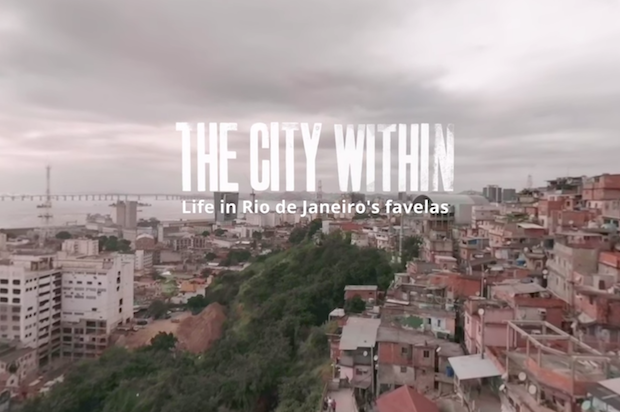The 2016 Rio Olympic Games gave news organisations room for experimenting with newer and more traditional formats – livestreaming featured prominently in many publishers' coverage, alongside data projects and interactive pieces, such as the Guardian's Rio Run podcast.
For The Financial Times, the event provided an opportunity to develop the third instalment of FT Weekend's Hidden Cities, a series of city guides, and the chance to expand the project with a new element: virtual reality.
Like the previous instalments about Brussels and London, Hidden Cities: Rio combines reporting from FT journalists available outside the paywall, including reviews, cultural recommendations and places to visit in a particular city – which readers can filter by author, category or using a tailored Google Map – with a four-minute 360-degree video about life in Rio's favelas.
"It was a natural progression in the project," Natalie Whittle, associate editor for FT Weekend, told Journalism.co.uk in a recent podcast.
"Setting up the technology for the maps and the content and finding out how to best combine them online was quite a big undertaking.
"So once we had that in place and we had a website to build on, it felt like a no-brainer that we should get on the ground in Rio and show our readers what was going on – and VR was really the natural thing."
'The City Within: Life in Rio's favelas' can be watched on the Hidden Cities microsite on ft.com and on YouTube; Google, the outlet's partner in the ongoing series, also provided 35,000 Cardboard headsets to readers of the weekend print supplement.
In the 360-degree video, the FT's Brazil correspondent, Samantha Pearson, guides the audience through the streets of Rio, sharing information about the favelas, and places viewers inside one of the cable cars people use to travel to work in the centre of the city.
"We didn't want it to just be floating around on the website, unconnected to anything, and I thought it would make a lot of sense if a VR film could be an enrichment to a in-depth piece of journalism," Whittle explained.
"I think it's kind of an extension to [Samantha's written Hidden Cities piece]. You have these elements together – Samantha is talking to people who live and work there and we also had a photojournalist presenting a fascinating visual take on what life on the streets of the favelas is like.
"This project showed VR could add something to both of those elements without really detracting from them – it literally added another dimension but also an enrichment to what we could give to the readers."
Other news organisations have also taken a similar approach of embedding 360-degree videos into larger multimedia packages. Earlier this year, The Washington Post produced a video in this format that allowed viewers to experience life and underwater swimming in the Galápagos Islands. While the 360-degree piece was central to the piece, the Post designed it to be consumed alongside the rest of the text, maps and images that made up the package.
“The question we ask is ‘what is going to be the most compelling bit of a story?’ If that’s the video, we lead with it and everything else becomes complementary, but if the video is what ends up becoming complementary, we’re fine with that too,” Micah Gelman, head of video at The Washington Post, told Journalism.co.uk back in June.
FT Weekend is hoping to launch the fourth Hidden Cities project before the end of the year and Whittle said the team is "excited about what we could do next with this type of content".
"I think there are all sorts of applications for it that would be brilliant for FT Weekend.
"For the arts desk and the way they would be able to explore artists and makers... And sound is also an interesting component of VR, because you can get all the ambient noise, you can get a real sense of being somewhere, so you could be in the middle of an orchestra kit for example.
"There isn't a limit to how much it could be used, except for a budget."
Free daily newsletter
If you like our news and feature articles, you can sign up to receive our free daily (Mon-Fri) email newsletter (mobile friendly).










